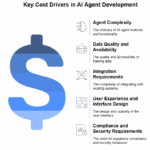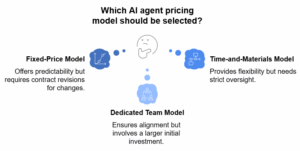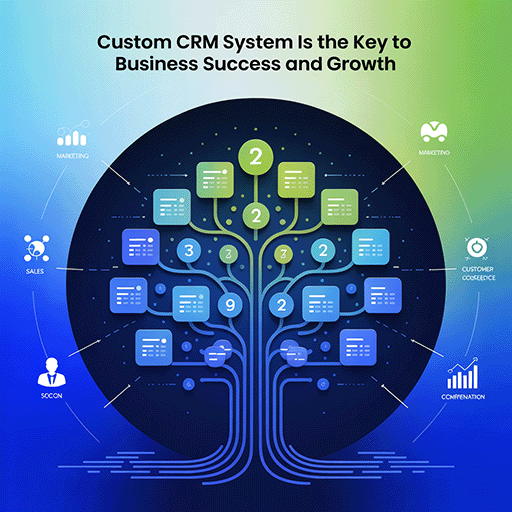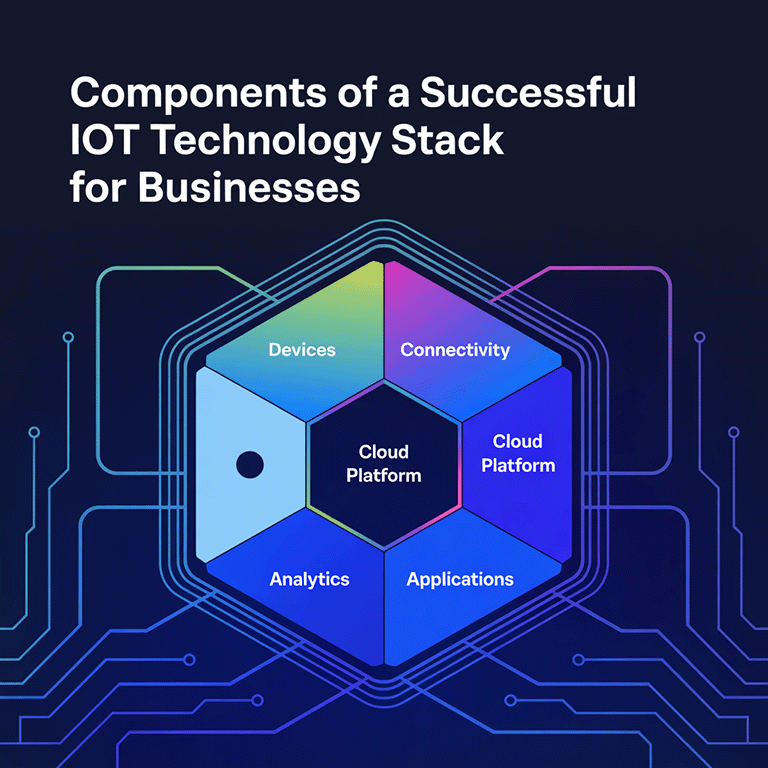Mobile apps are crucial tools for increasing revenue, improving business efficiency, and engaging customers in today’s digitally first world.
Artificial intelligence (AI) agents are quickly becoming essential tools for contemporary businesses. The worldwide AI agent market is rapidly expanding, estimated to rise from $5 billion in 2024 to $47.1 billion by 2030, representing a compound annual growth rate (CAGR) of 45%.
AI agents are transforming how businesses function, compete, and grow, whether it’s through voice-activated assistants that respond to consumer enquiries or intelligent backend systems that automate decision-making. However, what is the price of creating one of these intelligent systems?
If you intend to develop a solution that incorporates artificial intelligence into your operations, you must comprehend the AI agent development cost. The total price varies greatly depending on the long-term objectives, complexity, and scope. Understanding these factors is crucial for a seamless and economical development process when choosing artificial intelligence services. This article will explain how various pricing models operate, what factors affect the cost, and how to prepare for a seamless and economical development process.
AI Agents’ Increasing Significance in Business
Software programs driven by artificial intelligence technologies like neural networks, machine learning, and natural language processing are known as AI agents. An AI Agent for Business can operate independently, communicate with people or other systems, and make context-based decisions, all without human input.
Customer service, healthcare, finance, logistics, and enterprise automation are among the industries that frequently use these agents. They provide substantial advantages to businesses, including the elimination of time-consuming procedures, quicker support, and the ability to make decisions in real time based on vast amounts of data.
AI Agent Development Cost Based on Features
Setting reasonable expectations and effectively managing your budget require an understanding of the cost breakdown of developing AI agents. Although there are several variables that affect total costs, such as industry, tech stack, and complexity, examining the features you intend to use is one of the most useful methods to determine pricing.
A summary of common AI agent features and their approximate development costs can be found below. These costs are estimated for 2025 and are predicated on expert implementation by a seasoned AI development firm such as LITSLINK.
1. Basic AI Chatbot with Pre-Trained Responses
Simple intent recognition and pre-programmed responses are used by this entry-level AI agent. It works best for onboarding processes, lead qualification, and FAQ support.
Estimated cost: $10,000–$20,000
2. NLP-Powered Conversational Agent
Sentiment analysis, natural language comprehension, and personalised conversation flows are all included in this version. It makes dialogues more lively and contextually aware.
Estimated cost: $25,000–$45,000
3. Voice-Enabled AI Agent
These agents use text-to-speech (TTS) to provide voice feedback, process voice input, and convert speech to text (STT). frequently found in customer service IVRs or smart assistants.
Estimated cost: $40,000–$70,000
4. AI Agent with Backend Process Automation
This agent responds to users and automates internal tasks like data entry and task assignment by integrating with databases, CRMs, or third-party services.
Estimated cost: $50,000–$90,000
5. Enterprise-Grade AI Agent with ML Training Loop
This system continuously re-trains its model, gathers user data, and modifies behaviour over time. Ideal for customer analytics, healthcare, or fintech.
Estimated cost: $100,000–$250,000+
Discovery, UI/UX design, AI model configuration, backend integration, deployment, and quality assurance are usually included in these expenses. They might not, however, include maintenance, retraining, and long-term hosting, which you should account for when estimating the cost of developing an AI agent.

What Affects the Price of Developing AI Agents?
There are several factors that affect the price of creating an AI agent. Instead, it is the outcome of multiple interrelated elements that influence the project’s overall scope and schedule. Let’s take a closer look at the key cost drivers.
1. Agent complexity
It is one of the main causes of cost. An intelligent conversational assistant that uses natural language processing (NLP) to understand human speech and provide nuanced responses is far more difficult and time-consuming to develop than a basic AI agent that uses rule-based logic and manages a small number of queries or transactions. You will need more infrastructure, time, and experience to develop an AI agent with the functionality and intelligence you desire.
2. The quality and availability
The amount of training data is a crucial factors that affect your budget. The quality of the training data determines how well machine learning models perform. You’re ahead of the game if you already have clean, labelled datasets that are pertinent to your industry. However, you will need to budget time and resources for data collection and preparation if your project is starting from scratch. This can turn into a substantial investment, particularly if you need domain-specific or real-time data.
3. Integration requirements
The majority of AI agents require interfaces with databases, enterprise platforms like CRMs and ERPs, or existing software. The development effort needed to ensure smooth communication and data exchange increases with the complexity of the ecosystem your agent must integrate with.

4. User experience and interface design
The success of the solution ultimately rests on how users interact with the agent, even if its intelligence is sound. Usability and adoption rates can be increased with a well-designed user interface (UI) or with voice agents, with a seamless audio interaction. It goes without saying that spending money on high-quality UX and unique design components can raise costs while simultaneously increasing the efficacy of the agent.
5. Compliance and security requirements
If your AI agent is meant to be used in sectors like healthcare, finance, or insurance. Your architecture and data handling procedures become more complex as a result of regulatory frameworks like GDPR, HIPAA, and SOC 2, which call for additional security measures and audits.
For a real-world take on how cost varies by use case, check out our post on AI agents in financial services.
Knowing AI Agent Pricing Structures
Knowing how providers set up their AI agent pricing models is crucial for budget planning. Financial frameworks vary depending on the project, and selecting the appropriate one can help you control expenses and manage risk.
For smaller or more clearly defined projects, the fixed-price model is frequently selected. Based on the project scope, the development team in this case offers a precise quote. Although it provides predictability, any additions or modifications made during the project might necessitate a contract revision and extra expenses.

The time-and-materials model works better for projects that are more dynamic or changing. You are charged for the actual number of hours and resources used when using this method. Although this model allows for more flexibility in modifying the project’s features or scope in the middle, it necessitates stricter oversight to control budgets and schedules.
For large-scale AI projects with ongoing development requirements, the dedicated team model is an additional choice. In essence, you enlist a group of product managers, data scientists, and developers to work solely on your solution. Maximum alignment and knowledge retention are made possible by this, but there is a larger initial outlay of funds.
Considering Post-Launch Expenses
AI agents aren’t “set it and forget it” solutions. After launch, your system will need regular updates, retraining, and maintenance. Planning for ongoing data monitoring, performance evaluation, and algorithm fine-tuning is crucial because models may drift over time as user behaviour or business conditions change.
Your long-term budget should also account for infrastructure expenses like cloud hosting, API subscriptions, or third-party services. You should also think about cybersecurity precautions and yearly compliance audits if your AI agent works in a real-time setting or handles sensitive data.
Although frequently disregarded, these ongoing expenses have a big impact on the overall cost of ownership. Our AI agent development process overview includes tips on how to manage this phase efficiently.
How to Obtain an Accurate Cost Estimate for the Development of AI Agents
Working with an experienced development partner is the most efficient way to determine the actual cost of your AI agent. They will assist you in defining your needs, selecting the best technical architecture, and figuring out which tools and platforms are the most affordable.
At LITSLINK, we approach the creation of AI agents strategically. Our team collaborates with you to develop scalable, secure, and significant AI solutions while offering comprehensive cost estimates and timelines. We customise our services to fit your business needs and budget, whether you require a proof of concept or a full-scale enterprise-grade deployment..
Choosing the Right Partner for AI Agent Development
Finding a development partner who understands your industry, your problems, and your objectives is more important than simply finding someone who can write code. A good AI partner contributes not only technical skills but also design know-how, strategic thinking, and a results-driven mindset.
LITSLINK guarantees that your AI agent is not only functional but also scalable and intuitive by fusing extensive experience in artificial intelligence with a user-centric development process. From conception and prototyping to launch and ongoing optimisation, we serve as your long-term partner.





